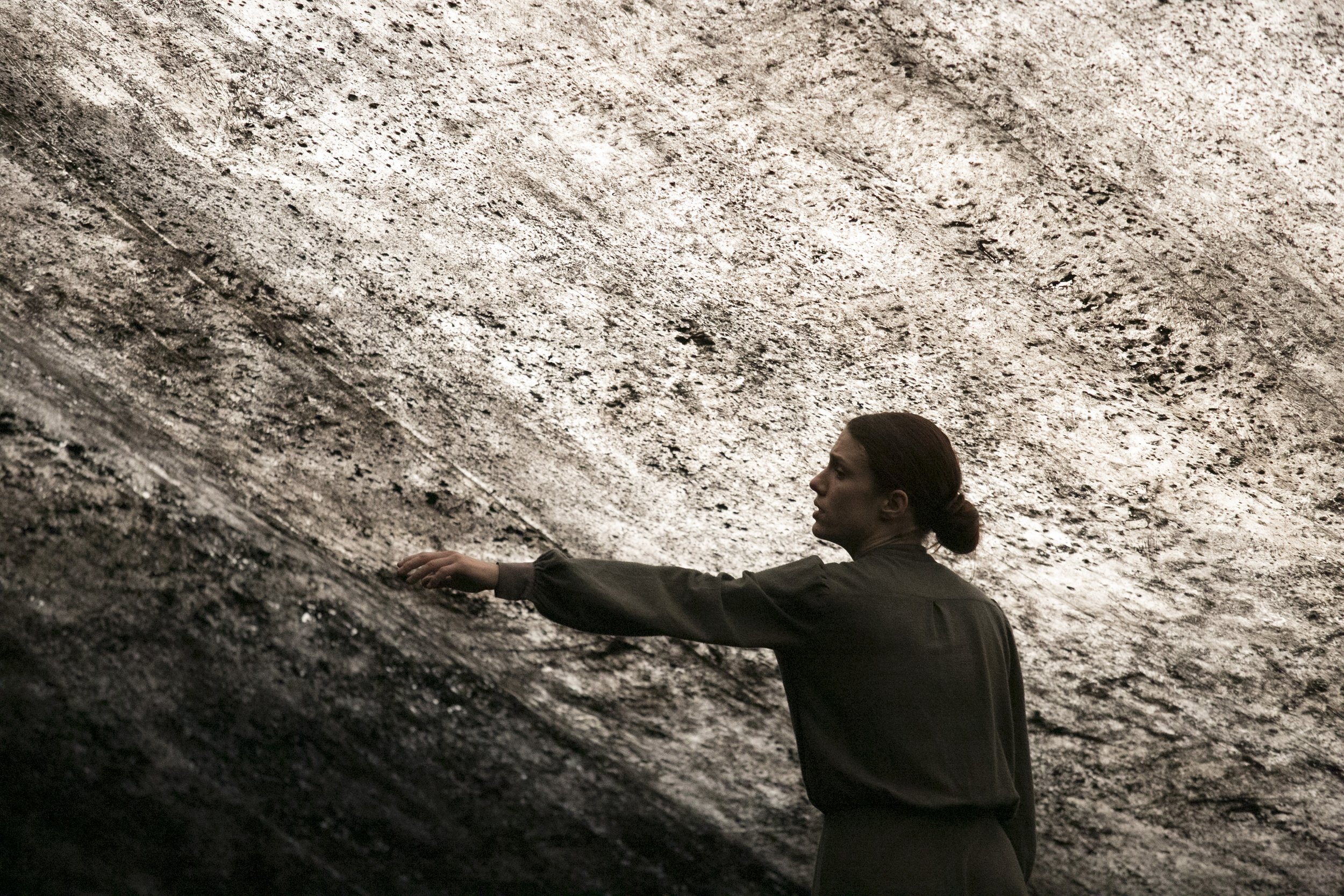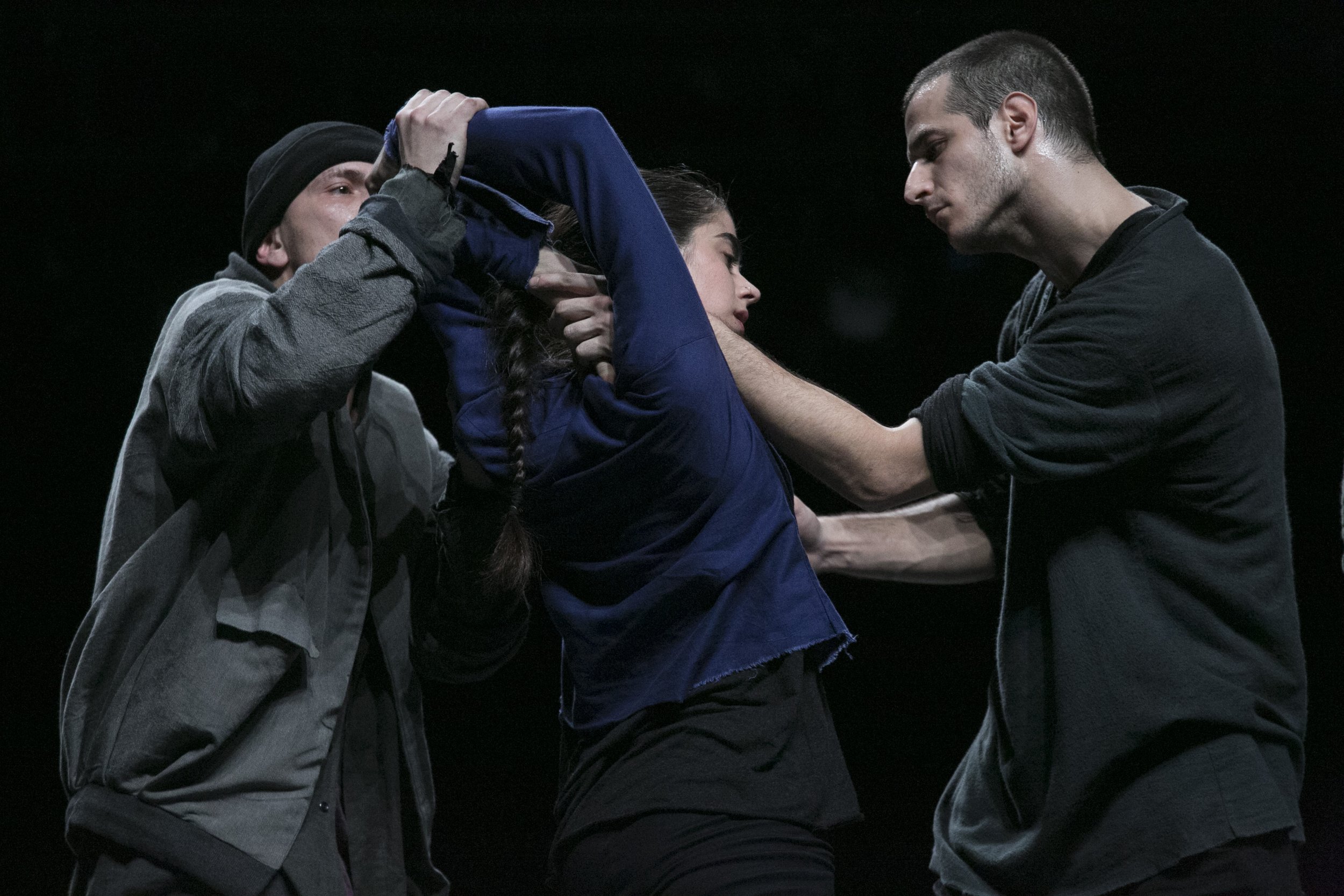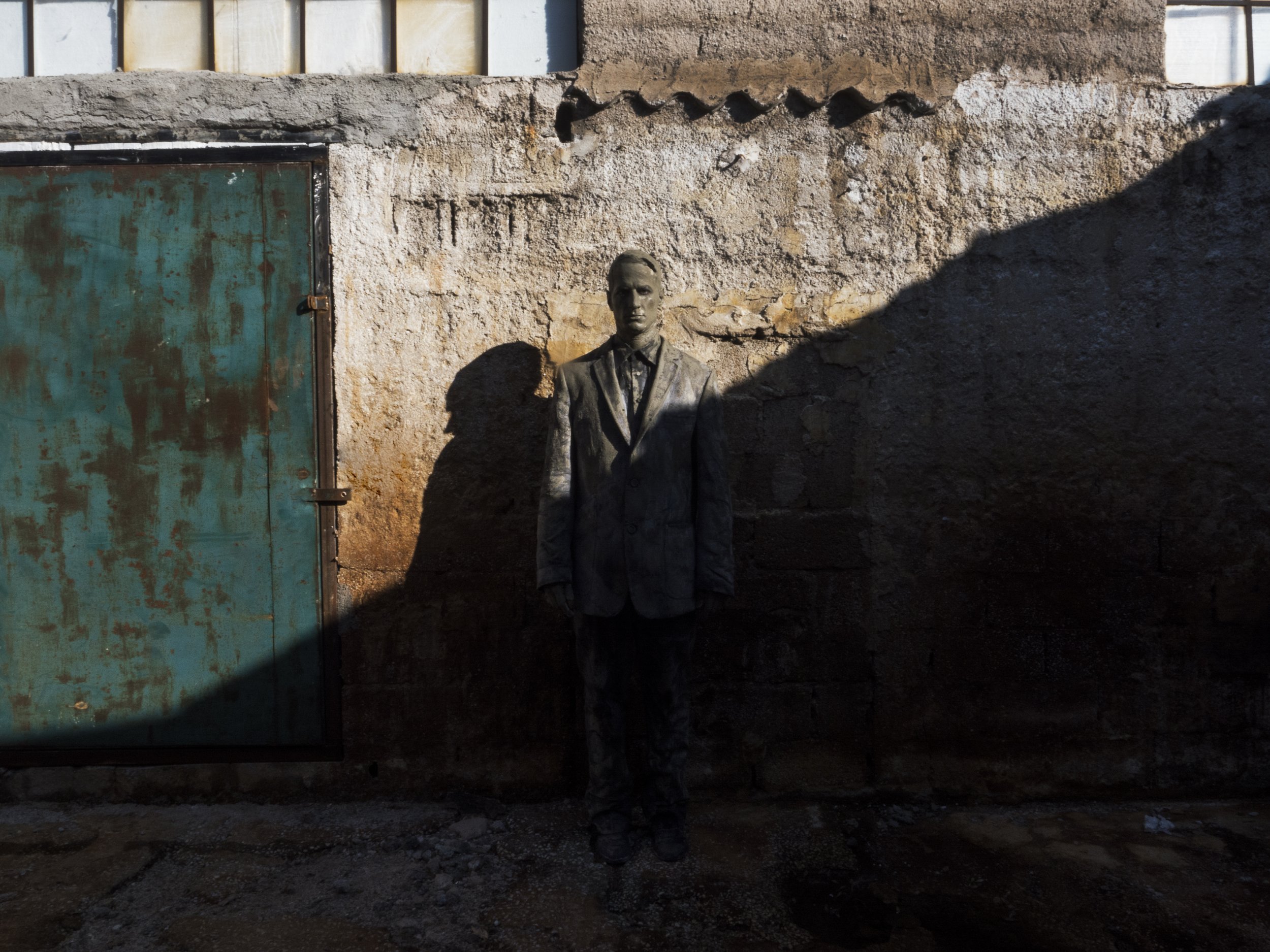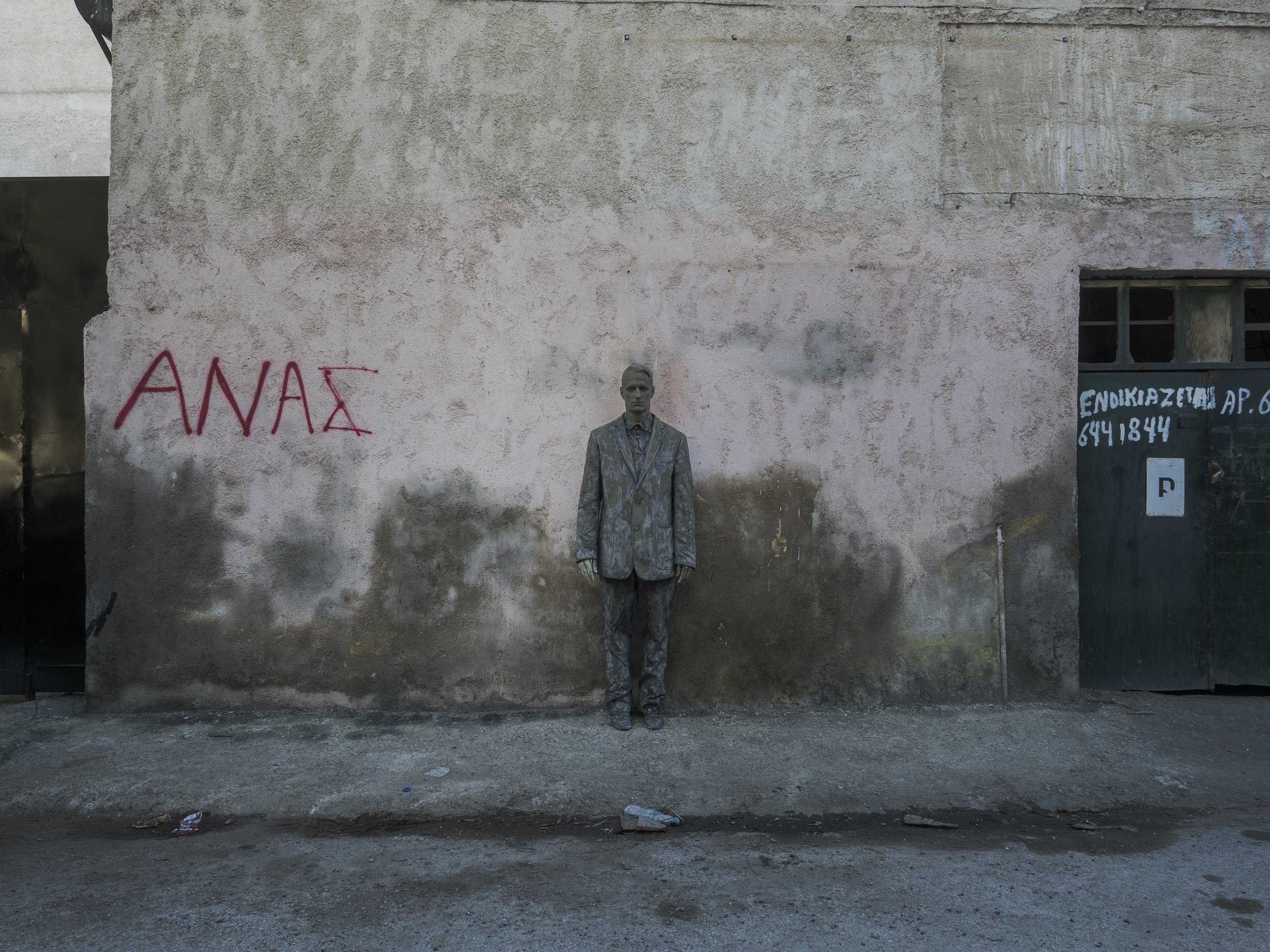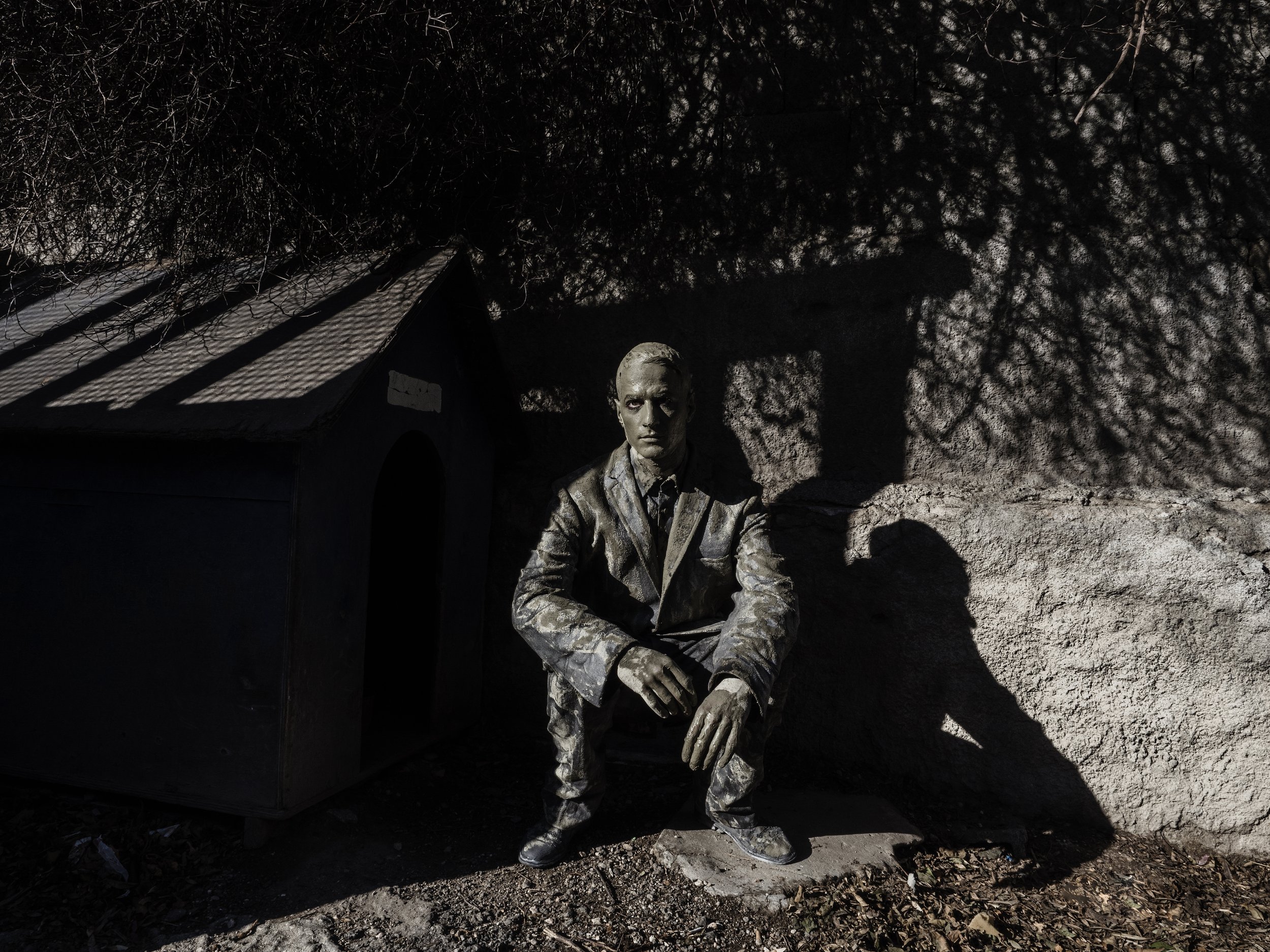“If only we could listen to the voices underneath the cements…
Automatisms in the shape of a prophecy.”
Production: Onassis cultural Center
Coproduction and residencies:
Maison de la Danse, Lyon
Centro Cultural Villa Flor, Guimaraes
O Espaco do Teampo, Montemor-o-Novo
With the support
of the Hellenic Ministry of Culture and Sport
Duration of the piece: 70 min.
Premiere of the piece: 1st of March 2017.
Choreography: Patricia Apergi
Dramaturgy: Roberto Fratini Serafide
Music Composition: Vassilis Mantzoukis
Lighting Design: Nikos Vlassopoulos
Set: Dimitris Nassiakos
Costume: Vassiliki Syrma
Choreographer’s assistant: Dimitra Mitropoulou
Performers: Ilias Chatzigeorgiou, Nondas Damopoulos, Chara Kotsali, Giorgos Michelakis, Ioanna Paraskevopoulou, Eva Georgitsopoulou
Set building: Dimitris Nasiakos, Emmanouil Levedianos, Giorgos Feretos
Sound recording, Sound Mixing, Mastering: Christos Parapagkidis
Production Manager: Rena Andreadaki
Design of promotional material: Kallina Kiratsouli
Promo photos: Tassos Vrettos
Makeup: Achileas Charitos
The new work by Aerites Dance Company, keeping the thread of an elementary ‘exploration’ in the urban labyrinth, visits one more time the urban environment, but this time, the thematic of the company, focuses more on the idea of the dwelling of the city.
What is like to be homeless and live on the streets?
What is the significance of the ‘empty spaces’ of a city?
How can these spaces be re-used and recycled?
And what kind of dance can be born there?
Cementary is an imaginary city. A city, that belongs to the future using contemporary issues and the nowadays examples. Cementary is a city that survived a crisis although still mourns for its victims. It is the city of blending. It is the city where voices scream underneath the cements. Cementary is the future, even though today we are unable to imagine it.
For this piece, Aerites are reproaching ballet, in a way that could be danced on the streets, creating a kinetic vocabulary that could be called “street-ballet”. Such a contradictory and provocative language, but at the same time a language that could be understood by anyone, where any “body” can fit anywhere.
With Cementary, Aerites want to devise their own city of their dreams, their own world, which might allow us to ponder, even for a little while, on our future.
Anti-epilogue,
today,
100 years after.
If only we could listen to the voices underneath the cements…
Automatisms in the shape of a prophecy:
The city of tomorrow corresponds to the aesthetic quality of its tyrants, so we cannot prey on its posthumous fame.
A city, which belongs a priori to crisis because of its consistency and innovation.
The future is war.
We shall discover the forgotten happiness into darkness and basements. Because we first reached this neighbourhood and we played here first. We go around because we can’t stop. We move because if we stop, we contribute to the project you undertook, to exterminate a generation of promising and innocent educated consciousness. But you didn’t take into account that this hunting doesn’t lead to the sky, but to the bottom of your anxiety.
The future is disorder.
Nothing is darker than the disappearance of a dream.
And we shall become a magnificent history for the new generations, going around a city that you abandoned, uninvited, untidy but obsessively honest. Because we know that whatever we will see won’t correspond to the naivety and arrogance of time, but is going to sing hymns, through rusted pipes, for the beauty of life. A life that we first knew is impossible to abandon, because we would lose all the songs we made alone, without your help.
Whatever
remains
will be future.
Besides, the fairy tale of a city that sleeps in chaos, won’t be spoken by the forgotten bombs that didn’t explode, but by the shooting of our own legs that will run so fast, trying to make you understand that if you don’t move fast enough, you will fall into the ditch of illusions.
SOME NOTES ON CEMENTARY FROM THE DRAMATURG ROBERTO FRATINI
How can we imagine the weird Aftermath of a Humanity surviving to itself, to its own death, its miserable loss of dignity, having been the full accomplices of the crime it suffered? Cementary is not another spectacular, thrilling version of that “Exit Humanity”.
Because the show was over even before beginning. The end came and we didn’t even realise it was coming. We even laughed at the crumbling of the sky, and at the collapse of all the High Things that from above made us feel happily enslaved: powers, religions, rules. What lies ahead (40 more years of fucking and being fucked) is a predictable triumph of the worst. More work for more Nothing. And what AFTER? Shall we sit down, mourning on our empty tomb? Will we give up the domestic comedies we loved to play in the age of our irresponsibility? Having been adults lured into acting like children, we will be awkward children condemned to act for once as adults. Maybe the astonishment will be greater than the pain. And we’ll have to reinvent a new humanity, with a new body, with different crooked habilities, with a new sense of togetherness, capable of the strangest love, gasping new rules of solidarity in a breathless habitat where not even the air is granted anymore.
Maybe we will be as strange as those animals who endure, in the great Depths, unimaginable pressures; and as uneven as the ultimate, distorted version of the ballerina who draw a paradoxical Grace from the worst physical stress.
The big Aftermath is a terrible freedom, yet still a freedom. Cementary is this place made of the patience of being free. Not the last place. But a lasting one.
Roberto Fratini Serafide
“Oh someone, o none, Oh no one, oh you:
Where did it go, the meaking for nowhere?
Oh you dig and I dig, and I dig through to you,
And the ring on our fingers awakens.”
REVIEWS
-
REVIEWS -
tanznetz.de // 2018 Author: Isabelle von Neumann – Cosel // Generation Losers
Ludwigshafen – naturally. Greek choreographer Patricia Apergi creates a dark portrayal of her generation in her new work. Ludwigshafen’s audience had the pleasure of watching the premiere of ‘Cementary’ in Germany.
It came face to face with a movement vocabulary that is as unique as it is impressive, a vocabulary that places Patricia Apergi as one of the most thrilling new choreographers of the Millennial generation.
[…]
Patricia Apergi takes a clear sociopolitical stand, when she places the misery of her generation in the hands of its participants, instead of blaming the conditions in an economically suffering nation. However it’s not the what, but the how, which is wildly impressive in her statement. This is what political dance theatre looks like today.
Mannheimer Morgen // 2018 Author: Gülcin Onat
“Using strong and expressive movement, the dancers attempt to liberate themselves from the oppressive lack of a future. Even the sensual musical accompaniment of strings and piano by Vasili Mantzoukis, possibly reminisces of a faded memory, one that gets deformed and restructured with the electronic sounds.
Melancholy can become so beautiful!
Rheinpfalz 2018 // Author: Alexandra Karabelas
Impressive visuals of the passage of time
It is often necessary to experience great pain in order to produce great art. The validity of this truth was witnessed and more importantly felt during the opening of the Ludwigshafen international festival ‘Nach Athen!’ on Wednesday. Greek choreographer Patricia Apergi was able to create an important artistic document about the current state of living that countless people in that country have been experiencing since the start of this economic crisis.
What is critical is that Apergi’s work can be applied metaphorically for similar situations around the world. Poverty and wreckage, the lack of faith in the future and in hope, and the experience of being forced to develop crazy strategies for survival; all these elements are characteristic of the nation that received the sun, the sea and the mythology as gifts from the gods. ‘
[…]
This work earns its status for its footwork and the management of the dancers within the space. The dancers rely on the basic values of classical ballet working in the first or third position. Sometimes they stand in pairs, sometimes alone, and other times they organize in Pas de Trois or Pas de Quatre. The form of classical ballet is recalled in a near-sensationalist way, and then gets restructured so that it becomes somewhat of proclamation of their inability to dance anymore. The leg barely leaves the ground during an arabesque. The body gets carried around like an exhausted puppet. Amidst all this we also witness the clean image of happiness. Their common laughter – even if it’s bizarre. Memories of the joyful games they used to play. A community. The violin joins the electric guitar and electro beats and together they create a song of protest for those not yet dead.’
El pais 2017
Patricia Apergi, director of the company since 2006, is the author of this poetic and intricate work that places the action in an imaginary city of the future, which has survived the crises but where the voices of the survivors arise under the cement. The first images shake the heart of the viewer. The coexistence and struggle of these beings will reveal the most primitive feelings: fear, pleasure, generosity and truth.
[…]
The choreographic vocabulary devised by Apergi, combines the daily gesture with the fluent choreographic phrase, achieving an expressive dance with a strong emotional charge. The bodies of the dancers are of astonishing ductility, they twist like rep- tiles or they snuggle innocently.
On Barcelona 2017
It is a reflexion and a critique of the modern era. A purer and lasting contemporary dance!








